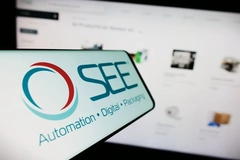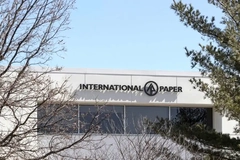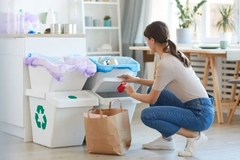PPWR will increase plastic packaging waste by “up to 1500%” for takeaway, finds McDonald’s study

13 Mar 2023 --- A shift to reusable packaging, as proposed in the EU’s upcoming revisions to the packaging and packaging waste directive (PPWD), could have adverse effects on the economy, food safety and the environment if implemented in takeaway consumption formats for the informal eating out (IEO) sector, warns a study commissioned by McDonald’s.
The study projects that 2030 mandatory reuse targets set by PPWR will increase plastic packaging waste by “up to 300%” for dine-in consumption and “up to 1500%” for takeaway.
“The EU should beware of the unintended consequences of this well-meaning regulation. By focusing solely on reusable packaging, we at McDonald’s believe that the PPWR will actually be counterproductive to the overall goals of the Green Deal,” says Jon Banner, executive VP and chief global impact officer at McDonald’s.
The study found that the reuse models across packaging types and channels in the IEO sector can lead to increased waste volumes, a sharp increase in plastic materials, an increase in greenhouse gas (GHG) emissions and added stress on water and energy systems.
The report, titled “No Silver Bullet,” highlights that Europe needs a mix of circularity solutions tailored to consumption formats. Kearney conducted the study focusing on limited-service restaurants, including restaurant chains like McDonald’s and Starbucks and small eateries like the local kebab or chip shop.
 The IEO sector generates over one million metric tons of packaging waste.PPWR environmental impact
The IEO sector generates over one million metric tons of packaging waste.PPWR environmental impact
For the study, global management consulting firm Kearney modeled various scenarios to assess and quantify the economic, environmental and consumer impact of three circularity options and specific solutions – reduce or replace (composting), reuse and recycle – across both dine-in and takeaway formats.
“For dine-in consumption, we estimate that while total packaging waste (all packaging types, but primarily fiber-based) could be reduced by up to 50%, the total plastic packaging waste would increase by up to 300%,” the report details.
“GHG emissions will also rise, driven by the manufacturing of the packaging material (primarily plastics) and the energy required to wash and dry reusable packaging. In addition, reuse models would require 1 to 4 billion liters of additional water consumption (depending on reuse targets).”
Regarding the economic impact of the PPWR targets, Kearney estimates an investment required for managing reuse ranges from €2 billion (US$2.13 billion) for dine-in consumption only, to €15-20 billion (US$16-21 billion) for full reuse across all items, including takeaway.
“This is primarily driven by the need to establish the appropriate reuse ecosystem including washing infrastructure (in-store and through third-party providers), collection points and reverse logistics.”
The report was launched at an event hosted by MEP Massimiliano Salini of the European People’s Party group and organized by the European Paper Packaging Alliance (EPPA) at the European Parliament.
“The best sustainability solutions come from industry, not governments,” remarked Salini.
“In the European Parliament, we will strongly oppose any attempt to impose unilateral choices from above, which don’t consider each State’s industrial specificities…we are working on modifying the proposed regulation because we consider it profoundly wrong to privilege the reuse model at the expense of the recycling one – an approach that could only frustrate the efforts of European companies to meet EU targets for recycling.” According to Kearney, the IEO sector’s packaging waste is expected to increase to 1.7 million metric tons by 2030.
According to Kearney, the IEO sector’s packaging waste is expected to increase to 1.7 million metric tons by 2030.
Increased GHG, water and energy
According to the report, the IEO sector generated about one million metric tons of packaging waste in 2021, representing about 1% of total waste in Europe. As per the study, the sector’s packaging waste footprint is driven by nine key packaging types.
“Eighty percent of materials are fiber-based (56% board and 24% paper), with only 7% of items plastic based – a figure that is expected to further decrease through the EU Single Use Plastics Directive and growing commitments from corporations to reduce their plastic packaging waste footprint,” the Kearney report states.
It further substantiates that based on the current trajectory, the sector’s packaging waste is expected to increase to 1.7 million metric tons by 2030.
The study shows that a move to 100% reusable packaging by 2030 would increase GHG emissions by up to 50% for dine-in and up to 260% for takeaway. Reuse models for dine-in would also require up to 4 billion liters of additional water.
Thomasine Kamerling of Finnish food packaging company Huhtamaki Group, who was present at the report’s launch event, observed that part of the complexity of the debate around the PPWR targets is derived from the fact that food packaging has particular hygiene and safety requirements.
“[The requirements] preclude recycled material from being used as it cannot come into contact with food. In addition, the current proposal, as it stands, would result in a much higher use of water in washing for reusables leading to a drain on natural resources which is problematic in water-scarce areas across Europe,” Kamerling reiterated.
McDonald’s is a partner of Huhtamaki’s Cup Collective initiative to collect and recycle cardboard beverage and ice cream cups into fiber. The study shows that a move to 100% reusable packaging by 2030 would increase GHG emissions by up to 50% for dine-in and up to 260% for takeaway.
The study shows that a move to 100% reusable packaging by 2030 would increase GHG emissions by up to 50% for dine-in and up to 260% for takeaway.
Circularity via multi-stakeholder coalition
The report summarizes that only a tailored, multi-solution approach will allow the EU to meet its circularity ambitions. Speaking at the event, one of the report authors Johan Aurik, chairman emeritus at Kearney, said: “There is no blanket solution to achieving circularity. We need a system-based approach – everyone in the value chain needs to work together in terms of investment and regulatory approach.”
Antonio D’Amato, president of EPPA and president and CEO of Italian packaging company SEDA, said there are many contradictions in the PPWR, which was mirrored by MEP Carlo Fidanza of European Conservatives and Reformists Group, who added that the Commission’s (EC’s) draft does not respect the principle of subsidiarity and proportionality and proposes an excessive use of delegated acts.
“The choice to propose a regulation rather than a revision of the directive highlights an ideological choice of the EC in favor of reuse and against recycling, unjustly penalized even though numerous studies demonstrate the lower polluting impact during the entire life cycle,” underscored Fidanza.
McDonald’s Banner authored a piece for Politico expressing concerns about the PPWR. He says the IEO sector is particularly complex and is not well understood.
He also highlights the progress the fast-food chain has made in Europe to move away from plastic packaging and adopt sustainable alternatives, with “92.8% (by weight) of McDonald’s food packaging in Europe [being] wood fiber and 99.4% of that fiber packaging [coming] from recycled or certified sources.”
Banner further emphasizes that reuse targets proposed in the PPWR will create four times the amount of plastic packaging waste for dine-in and 16 times for takeaway.
“We want such important decisions to be based on science, facts, and evidence, which is why we commissioned a report with the global management consultancy Kearney to assess environmental, economic, hygiene and affordability impacts of various packaging solutions,” writes Banner.
“As a result, we firmly believe the proposal will be damaging not only for the environment but also for the economy, food safety and consumers,” he concludes.
By Radhika Sikaria











